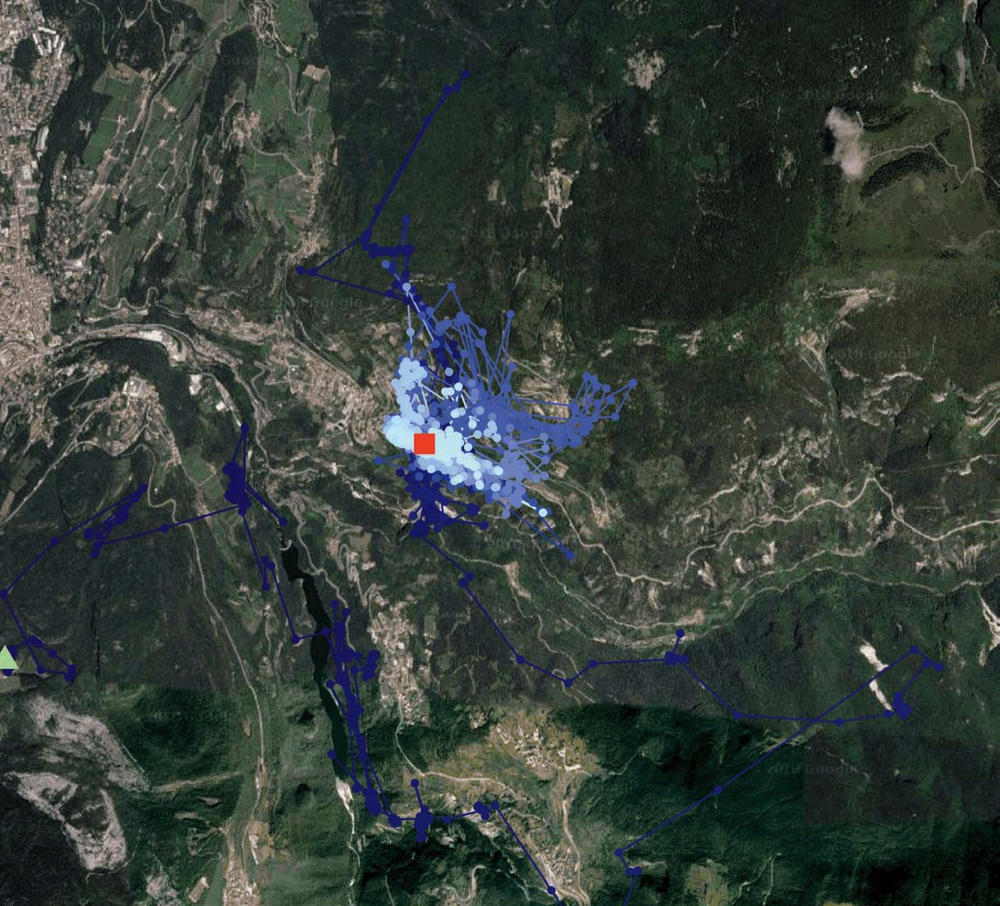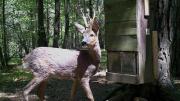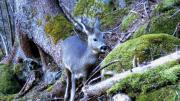European roe deer are much smaller than any deer Americans are used to seeing. At 45 pounds and just over two feet tall, an adult is closer in size to a greyhound than to its larger cervid cousins. And unlike highly social species like red deer or elk, roe deer like to be solitary. They spend most of their lives alone, within a range of one square kilometer—and the reason why is a mystery. These animals are built for movement: they can sprint at 30 miles per hour. “What makes them stay in such a small space for their entire lifetime?” asks Nathan Ranc, a fifth-year graduate student in organismic and evolutionary biology (OEB). And how do they choose their home territory?
These questions underpin all of ecology, because the answers influence how animals mate, form social groups, and use resources in their environment. To study how roe deer form their home range, Ranc says, it’s important to understand each animal as an individual, with a mind and a memory that differ from that of other deer. In the Alps of northern Italy, Ranc (co-supervised by OEB professor Paul Moorcroft and Francesca Cagnacci of the Fondazione Edmund Mach) and his colleagues are trying to build a model that can explain each of the factors that determine why particular deer choose to live where they do.
Home ranges in this species are particularly hard to understand because roe deer aren’t especially territorial: they don’t try to keep other does or bucks off their territories (except during the summer mating season, when males will fight off other males). This generally accommodating behavior contrasts with that of a territorial species like the Yellowstone coyotes Moorcroft has studied. In 2006, he and colleagues proposed a model of home-range formation among those predators that provided a powerful incentive to stay put: moving outside their own range might get them killed by other coyotes. But for roe deer, if there is no risk of confrontation in foraging afield, why not move?

The map above displays a deer’s movement (as captured by a GPS collar, which died at the red square). Darker shades of blue show older locations and lighter blue, the more recent ones.
Image courtesy of Nathan Ranc
Two different theories might explain their behavior: one is that by getting to know a place, a deer can better remember what forage is available where, and at what time of year. This matters because roe deer are picky eaters: unlike grazers that devour vast amounts of grass, they are browsers, choosing the highly nutritious tips of shrubs and herbs. A second theory hinges on their vulnerability to predators. The roe deer’s main predator is the Eurasian lynx, which ambushes its prey. To escape an attack, Ranc says, these tiny deer have only a split second to decide in which direction to run, “and it better be a good one.” Intimate knowledge of escape routes may give them a better chance of survival.
To study the first hypothesis, Ranc and his colleagues have fitted 26 deer with GPS collars that register a location every hour and also include accelerometers, allowing the researchers to more precisely reconstruct the animals’ movement. In addition, supplemental food—corn—is left throughout the landscape, and the researchers adjust its availability. The animals quickly learn which places are stocked with corn and, when the corn is removed, they learn that, too, and stop frequenting those locations. The individuals that most prefer corn are more likely to seek out the new locations, but all else being equal, the deer prefer to stick to places they know. “We study how roe deer learn about the changes that we make and how those changes make them redefine their home range,” Ranc explains. He says the team hopes to publish its results in the next year: “We have evidence that roe deer rely on past experience to make their foraging decisions.”
In a second project, in Aspromonte National Park in southern Italy, the team is studying a roe deer population in a region where they had been hunted to extinction and only recently reintroduced. “Their spatial memory is nil” in these new areas, Ranc says, creating ideal conditions to study how their home ranges emerge.
He sees the work as part of a turn in ecology toward understanding the importance of individual animals’ behavior. Until recent decades, “a lot of our understanding of the human impact on wildlife has excluded the idea that animals have created a unique knowledge about a unique place,” he explains. “And that knowledge is not necessarily transferable.” Animals that have been pushed out of a territory and then reintroduced will have lost the deep knowledge of the local environment that is otherwise passed down through generations.
A broader goal of studying how animals use space is to understand how humans can conserve and coexist with them. This is, for Ranc, what the work is really about. He caught a passion for the wild as a boy growing up in France, watching animals in the woods through binoculars. Many of Europe’s large animal populations had rebounded by the 1990s, after hitting rock bottom in the twentieth century. “Now, in Europe, he reports, “wolves, bears, lynx, and bison are all increasing in population size and range,” even though in many other parts of the world, the situation for wildlife is “dire. There’s no sugar-coating. It’s catastrophic.”
He finds it more motivating to think about conservation success stories, and about how careful study of the living patterns of species like the roe deer can help the animals thrive alongside human beings. This is not only interesting as fundamental research, he says, but “it also helps us understand how animals react to change—and humans make a lot of changes.”










